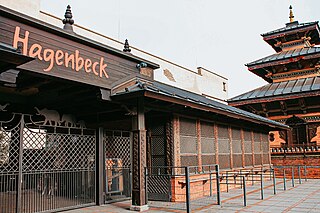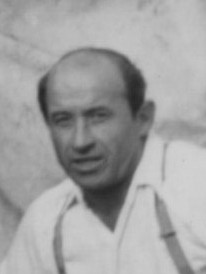Related Research Articles
The year 1934 in science and technology involved some significant events, listed below.
The year 1906 in science and technology involved some significant events, listed below.
The year 1911 in science and technology involved some significant events, listed below.
The year 1912 in science and technology involved some significant events, listed below.
The year 1916 involved a number of significant events in science and technology, some of which are listed below.
The year 1917 in science and technology involved some significant events, listed below.
The year 1918 in science and technology involved some significant events, listed below.

Schönbrunn Zoo is a 17-hectare (42-acre) zoo in the city of Vienna, Austria. Established in 1752, it is the world's oldest zoo still in operation. It is also a UNESCO World Heritage Site, being a part of the Schönbrunn Palace gardens. It generally receives more than 2 million visitors every year.
The year 1922 in science and technology involved some significant events, listed below.
The year 1884 in science and technology involved some significant events, listed below.
The year 1893 in science and technology involved some significant events, listed below.
The year 1844 in science and technology involved some significant events, listed below.
The year 1928 in science and technology involved some significant events, listed below.
The year 1941 in science and technology involved some significant events, listed below.

Carl Hagenbeck was a German merchant of wild animals who supplied many European zoos, as well as P. T. Barnum. He created the modern zoo with animal enclosures without bars that were closer to their natural habitat. The transformation of the zoo architecture initiated by him is known as the Hagenbeck revolution. Hagenbeck founded Germany's most successful privately owned zoo, the Tierpark Hagenbeck, which moved to its present location in Hamburg's Stellingen district in 1907. He was also an ethnography showman and a pioneer in displaying humans next to animals in human zoos.

The Tierpark Hagenbeck is a zoo in Stellingen, Hamburg, Germany. The collection began in 1863 with animals that belonged to Carl Hagenbeck Sr. (1810–1887), a fishmonger who became an amateur animal collector. The park itself was founded by Carl Hagenbeck Jr. in 1907. It is known for being the first zoo to use open enclosures surrounded by moats, rather than barred cages, to better approximate animals' natural environments.

The Karlsruhe Zoo is a city garden with a zoo in the southwest of Karlsruhe, Germany. It also encompasses the outer area; Tierpark Oberwald in the southeast of the city. The main area totals 22 hectares, and the Oberwald Zoo has an area of 16 hectares. A total of around 3000 animals of over 240 species live at the Zoologische Stadtgarten Karlsruhe. The city garden is located north of the Karlsruhe Hauptbahnhof and south of the Karlsruhe Congress between the Karlsruhe districts of Südstadt and Südweststadt. The zoo was opened in 1865, making it one of the oldest zoos in Germany. The city garden and zoo form a common, enclosed area and cannot be visited separately.

Johannes Gerhardus Hendrikus Burgers was in 1913 the founder of Burgers' Dierenpark, nowadays called Royal Burgers' Zoo. He was the owner and director of it until 1939. His youngest daughter Lucie Burgers was his successor, with her husband Reinier van Hooff. Their son, Antoon van Hooff (1937-2004), further developed the zoo.

Hugo Schmitt, born July 19, 1904, in Bann, Landkreis Kaiserslautern, in Southwestern Rheinland-Pfalz in Germany, dead August 9, 1977, in Sarasota, Florida, United States, was a German-American circus artist, animal trainer and one of the worlds most famous elephant trainers with a record of 55 elephants performing in the ring. Starting his career at Carl Hagenbeck Circus-Stellingen in Germany, Schmitt was elephant superintendent at the world's largest circus, Ringling Bros. and Barnum & Bailey Circus in the USA from 1947 to 1971.
References
- ↑ Ehrenfest, Paul; Ehrenfest, Tatjana (1907). "Über zwei bekannte Einwände gegen das Boltzmannsche H-Theorem" [About two well-known objections to Boltzmann's H-theorem]. Physikalische Zeitschrift (in German). 8: 311–314 – via Hamburger Kulturgut Digital.
- ↑ "100 Years of Persil". Henkel AG. 2006-12-22. Archived from the original on 2010-12-14. Retrieved 2016-09-17.
- ↑ Peach, B. N.; et al. The Geological Structure of the North-West Highlands of Scotland. Memoirs of the Geological Survey of Great Britain, Scotland. Glasgow: H.M.S.O.
- ↑ Oldroyd, David R. (1990). The Highlands Controversy: Constructing Geological Knowledge through Fieldwork in Nineteenth-Century Britain. University of Chicago Press. ISBN 978-0-226-62634-5.
- ↑ "Tarbuttite" (PDF). Handbook of Mineralogy. Mineral Data Publishing. Retrieved 2012-07-19.
- ↑ Spencer, L. J. (April 1908). "On Hopeite and other zinc phosphates and associated minerals from the Broken Hill mines, North-Western Rhodesia" (PDF). Mineralogical Magazine. The Mineralogical Society. 15 (68): 1–38. Bibcode:1908MinM...15....1S. doi:10.1180/minmag.1908.015.68.02. Archived from the original (PDF) on 2014-01-06. Retrieved 2012-07-19.
- ↑ Hais, I. M. (1988). "Tswett's letters to Claparède". Journal of Chromatography A. 440: 509. doi:10.1016/S0021-9673(00)94556-4.
- ↑ Roman, Constantin (2000). Continental Drift: Colliding Continents, Converging Cultures. pp. 11–12. ISBN 9781420034523.
- ↑ Soper, George A. (15 June 1907). "The work of a chronic typhoid germ distributor". Journal of the American Medical Association . 48 (24): 2019–22. doi:10.1001/jama.1907.25220500025002d. Archived from the original on December 21, 2019.
- ↑ Henchal, Erik A.; Putnak, J. Robert (October 1990). "The Dengue Viruses". Clinical Microbiology Reviews . American Society for Microbiology. 3 (4): 376–96. doi:10.1128/CMR.3.4.376. PMC 358169 . PMID 2224837.
- ↑ Schoetensack, Otto (1908). Der Unterkiefer des Homo heidelbergensis aus den Sanden von Mauer bei Heidelberg. Leipzig: Wilhelm Engelmann.
- ↑ "Vladimir Bekhterev". Russia-IC. Retrieved 2011-04-15.
- ↑ Ricketts, Bruce. "The Collapse of the Quebec City Bridge". Mysteries of Canada. Archived from the original on 2011-07-14. Retrieved 2011-08-16.
- ↑ Lundahl, Magnus. "History – The Sun Valve". AGA. Archived from the original on 2012-02-07. Retrieved 2012-03-02.
- ↑ "The Nobel Prize in Physics 1912: Gustaf Dalén – Biography". Nobelprize.org. 1912. Retrieved 2012-03-02.
- ↑ Georgano, G.N. (1985). Cars: Early and Vintage, 1886–1930. London: Grange-Universal.
- ↑ "Hagenbeck Tierpark und Tropen-Aquarium". Zoo and Aquarium Visitor. Archived from the original on 2009-12-21. Retrieved 2008-07-22.
The founder and his idea Carl Hagenbeck built what no other dared dream of. In 1907, the Hamburg man opened the first barless zoo in the world. As early as the end of the 19th century, this son of a fishmonger had the idea of showing animals no longer caged up but in open viewing enclosures. In his zoo of the future, nothing more than unseen ditches were to separate wild animals from members of the public. Carl Hagenbeck patented this idea in 1896. Nine years later his dream was to come true in Hamburg-Stellingen. The revolutionary open viewing enclosures and panoramas were in fact ridiculed in professional circles but took the public's breath away. Hagenbeck's zoo is considered to have prepared the way for today's wildlife adventure parks.
- ↑ Rothfels, Nigel (2002). Savages and Beasts: The Birth of the Modern Zoo. Baltimore: Johns Hopkins University Press. ISBN 0-8018-6910-2.
- ↑ "Obituaries: Air Commodore Sir Frank Whittle" . The Independent. 10 August 1996. Archived from the original on 2022-05-01. Retrieved 21 February 2018.
- ↑ "About Solomon Asch". www.brynmawr.edu. Archived from the original on 6 August 2019. Retrieved 21 February 2018.
- ↑ "Alexander Robertus Todd, Baron Todd | British biochemist". Encyclopædia Britannica. Retrieved 10 September 2021.
- ↑ Haines, Catharine M C; Stevens, Helen M (2001). International Women in Science: A Biographical Dictionary to 1950. Santa Barbara: ABC-CLIO. p. 66. ISBN 978-1-57607-090-1.